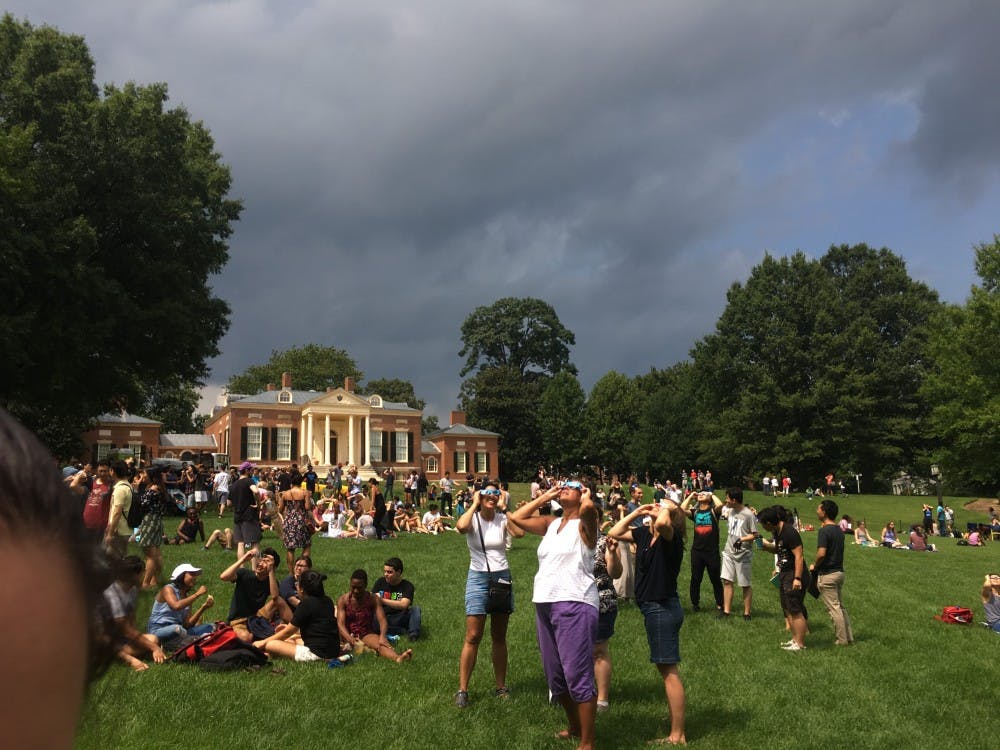During the year of our nation’s founding in 1776, there was a solar eclipse visible only in America. On Aug. 21, 2017 it happened again. Over 500 million Americans were in a position to view the total eclipse, and many more rushed from all over the country to join them.
During a solar eclipse the moon’s path brings it across the sky so that its shadow blocks portions of the sun’s light. During the August eclipse, people who were within the path of totality (the 70 mile wide ribbon across the U.S. where the moon completely covered the sun) were able to see the sky darken around them during the eclipse.
This time around, the majority of the country fell into a region where they were able to view a partial solar eclipse. During a partial solar eclipse, the moon’s shadow crosses in front of the sun but does not cover the entirety of it.
Only select geographical areas were able to view the total solar eclipse during which the sun was temporarily covered entirely by the moon’s shadow, leaving only the corona visible. For lucky individuals in Goreville, Ill., a town of 1,067 people, the eclipse lasted for over two and a half minutes, the longest viewing period in the U.S.
Universities, K-12 institutions, civic groups and countless other organizations planned meetings to watch the astronomical event. It took approximately an hour and a half for the eclipse to cross from the Pacific Ocean to the Atlantic.
For students at Hopkins, the Beach was the most popular place to view the eclipse. Dozens of students and staff gathered on the grass with eclipse glasses and screens to watch the journey of the moon’s shadow.
“The Beach was packed! It was so great to see everyone, students, faculty and locals, coming together to watch such an extraordinary event,” junior Hannah Miller said. “Every time the sun peaked through the clouds, people would quickly turn their cameras, glasses or pinhole projectors to the sky trying to catch a glimpse of the eclipse.”
The solar eclipse not only served as one of the most popular events of the month, but also as the subject of countless research projects across the country. Scientists across the country prepared to deploy an array of technologies and methodologies to gain a variety of novel views of the sun.
Carrie Black, a program director in the National Science Foundation’s (NSF) Division of Atmospheric and Geospace Sciences spoke to ScienceDaily about how the public interpreted the event.
“This total solar eclipse across the United States is a unique opportunity in modern times, enabling the entire country to be engaged through modern technology and social media,” Black said.
Madhulika Guhathakurta, NASA’s lead scientist for the 2017 eclipse, predicted the eclipse would be the most documented, appreciated and viewed eclipse ever. For most individuals, it was the opportunity to admire a celestial phenomenon.
However, for many scientists the eclipse was a rare opportunity to observe the solar corona. Some of the mysteries they hoped to solve included determining why the corona is so much hotter than the sun’s surface and the role the corona plays in spewing charged particles that can hit the earth’s surface and disrupt GPS systems and other technologies.
Scientists deployed ground based instruments as well as aircraft to follow the eclipse.
Infared measurements were used in conjunction with the NSF/National Center for Atmospheric Research (NCAR) Gulfstream-V research aircraft to better understand the corona’s magnetism and thermal structure.
Other instruments were aimed towards the study of the earth’s ionosphere during the event. Boston University even used cellphone technology to construct a single-frequency GPS array of sensors to study ionosphere events.
One particular project, the Citizen Continental-America Telescopic Eclipse Experiment by the National Solar Observatory, relied on volunteers located in the path of totality. The volunteers spaced along the path were to point identical telescopes and cameras at the sky to capture the entire eclipse from beginning to end.
Scott McIntosh, director of NCAR’s High Altitutde Observatory told ScienceDaily stressed the importance of studying this infrequent phenomenum
“This is a unique opportunity to communicate the fact that our star is complex, beautiful and mysterious,” McIntosh said. “At the same time, it’s more critical than ever to study it, as solar activity can pose significant threats to our technologically driven society.”





